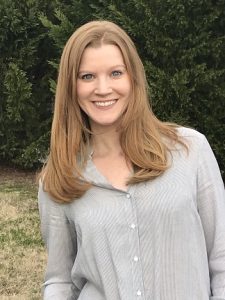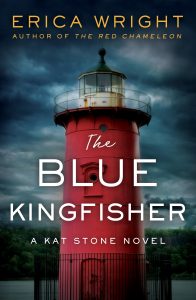Where to Hide the Body: Setting in Murder Mysteries
 At the University of Tennessee’s Forensic Anthropology Center—also known as the Body Farm—you’ll find corpses in various conditions and stages of decay. There might be one locked in the trunk of a car or another entangled in the roots of a tree. The goal, as you might guess, is not to scare neighbors on the other side of their razor-wired perimeter, but to allow criminology students and professionals an opportunity to study an important element of forensic science. Knowing how long a person has been dead can mean the difference between a cold case and a solved one.
At the University of Tennessee’s Forensic Anthropology Center—also known as the Body Farm—you’ll find corpses in various conditions and stages of decay. There might be one locked in the trunk of a car or another entangled in the roots of a tree. The goal, as you might guess, is not to scare neighbors on the other side of their razor-wired perimeter, but to allow criminology students and professionals an opportunity to study an important element of forensic science. Knowing how long a person has been dead can mean the difference between a cold case and a solved one.
The founder of the program, Dr. William M. Bass, co-writes the Body Farm mystery series with Jon Jefferson under the pen name Jefferson Bass, and I picked up the first one because of its unique setting, the Great Smoky Mountains in Tennessee (my home state). I know I’m not alone in being drawn in by a book’s locale. The brilliant writing makes Tana French’s In the Woods a success, but that spooky forest doesn’t hurt. It’s been years since I read Laura Lippman’s Baltimore Blues, but I still remember her determined heroine rowing down the Patapsco River in Baltimore. And I hope that Radha Vatsal is working on the third novel in her Kitty Weeks series because I can’t wait to revisit New York City of the 1910s. There’s an unspoken rule in crime fiction that the setting should be exciting—or made exciting—for the readers. Whether or not you buy that rule, it’s fair to say that location can greatly affect a novel’s tone.
When I teach setting, I like to show the preview for Broadchurch, a crime drama that airs on the BBC. The opening shot is of Harbor Cliff Beach, an imposing and forlorn swath of nature that seems, despite its undeniable beauty, to be entirely deserted. In between snippets of dialogue and closeups of the actors’ faces, the video swings back to the beach again and again as if to hammer home its importance. And indeed, the beach is central to the investigation, and not just because of the forensic evidence left there. It lords over the town, a visual reminder that danger is inescapable; there’s only so far that you can run. I recently finished reading Charlotte Armstrong’s 1957, Edgar Award-winning novel A Dram of Poison. At first glance, the setting seems rather pedestrian, the rural outskirts of a college town. As with Broadchurch, the remote location turns out to be key to the story’s claustrophobic use of suspense.
Setting can affect memorability as well as believability. The more details an author gets right about a place, the more likely readers are to lose themselves in the story. I abandoned the first draft of my new novel The Blue Kingfisher after I’d written about 10,000 words because I’d chosen the wrong site. While others write swimmingly about Quantico, my efforts were labored at best, embarrassing at worst. That was tough for me, throwing out months of work, but I knew in my gut that the story wasn’t right. After a short break to lick my wounds, I sat down with a blank notebook and started imagining a scene in my favorite New York City location—the Jeffrey’s Hook Lighthouse under the George Washington Bridge. When I lived in Washington Heights, I visited often, and the new chapter seemed to almost write itself. It felt like composing an ode—except, of course, for the dead body.
Sometimes I joke that my decision to write crime fiction is merely an elaborate scheme to get a research invitation to the Body Farm. Honestly, pursuing a forensics degree would have been faster. Instead, I’m beginning to imagine the start of a fourth Kat Stone novel. I no longer live in New York City, which makes setting a book there challenging. Like all big cities, it changes from week to week, a pulsing behemoth tamed by nobody. Research trips are necessary, and I get to visit in my mind, letting Kat gripe about subway delays, visit the aquarium, or grab a slice from Sal and Carmine’s. I’ve found that writing about a place I miss makes it easier to return to my desk each morning, eager to see where the story leads. My mornings are spent in what Armstrong might describe in A Dram of Poison as the privacy of my own skull—perhaps the most flexible setting of all, at once strange, familiar, and private. There’s no escape.
Social Media:
 What happens when a master of disguise tries to be herself for once? If you’re private investigator Kat Stone, trouble seems to find you with or without your favorite wig.
What happens when a master of disguise tries to be herself for once? If you’re private investigator Kat Stone, trouble seems to find you with or without your favorite wig.
Kat knows she’s living on borrowed time, waiting for her violent past to catch up with her. Still, she doesn’t expect men to start falling from the sky. On a desolate morning in Fort Washington Park, Kat discovers the body of her building’s French expat maintenance man atop the Jeffrey’s Hook Lighthouse. The NYPD is quick to dismiss his death as suicide, another lost soul leaping from the bridge overhead. Kat is less than convinced, especially when she learns about his dangerous side hustle, finding jobs for immigrant members of their community.
Her investigation turns up unexpected connections to Manhattan’s tony art world, not to mention a host of dark superstitions. When she goes undercover with a deep-sea fishing company, she gets a little too cozy with a colorful cast of characters and a couple of jellyfish. Will she find his killer before her past drags her under? From one of the most acclaimed new mystery writers working today comes a riveting novel of suspense that will have you guessing until the last page is turned.
Category: Contemporary Women Writers, How To and Tips































Wow! This is a great help, thanks for sharing. I am an author and love to write Mystery books and your blog is really helpful.
Thanks
Regards,
JB